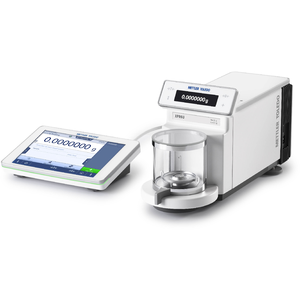What is BFS technology for IV fluid?

Introduction
In the world of medical science, innovation has always been at the forefront, aiming to improve patient care and enhance the efficiency of healthcare processes. One such groundbreaking advancement in the field of intravenous (IV) fluid administration is the BFS (Blow-Fill-Seal) technology. This innovative method has revolutionized the way IV fluids are packaged, stored, and administered. This article delves into the concept of BFS technology for IV fluids, shedding light on its intricacies and the numerous advantages it offers.
What is IV Fluid?
Before we explore BFS machine technology, let’s start with the basics. Intravenous (IV) fluids, often referred to as saline or simply IV drips, are essential components of medical treatment. These fluids are administered directly into a patient’s bloodstream through an intravenous line. IV fluids are designed to provide hydration, deliver vital nutrients, and aid in the administration of medications. They play a pivotal role in the treatment and recovery of patients in various healthcare settings.
Why is IV Fluid Administration Important?
IV therapy in Dallas you can find several places offering IV therapy services. IV therapy involves delivering vitamins, minerals,
The administration of IV fluids is crucial in various medical scenarios, such as surgery, emergency care, and intensive care units. IV fluids are used to maintain or restore fluid balance, ensure proper hydration, and deliver medications promptly. Therefore, the safe and efficient administration of IV fluids is of utmost importance for patient well-being.
The Basics of IV Fluid Administration
Types of IV Fluids
There are different types of IV fluids, each designed for specific purposes. These include crystalloids, colloids, blood products, and parenteral nutrition fluids. The choice of IV fluid depends on the patient’s condition and medical requirements.
Indications for IV Fluids
IV fluids are indicated in various situations, such as dehydration, electrolyte imbalances, and medication administration. The decision to use IV fluids is made by healthcare professionals based on the patient’s needs.
Understanding the BFS Technology
BFS technology represents a significant leap in IV fluid packaging and administration. It offers a sterile, efficient, and cost-effective way to produce IV containers. But how does it work?
How BFS Technology Works
BFS technology involves the creation of a container within a container. The process begins with the extrusion of plastic material to form a preform. This preform is then filled with the IV fluid. After filling, the preform is sealed to create an aseptic, single-dose container. The entire process occurs within a controlled environment, ensuring sterility and product integrity.
Advantages of BFS Technology
BFS technology boasts several advantages, including:
- Sterile production process
- Reduced risk of contamination
- Long shelf life of IV fluids
- Precise dosing and delivery
- Environmental sustainability due to reduced material waste
Applications of BFS Technology for IV Fluids
The BFS technology has found applications in various sectors, with the pharmaceutical industry and medical settings being the primary beneficiaries.
Pharmaceutical Industry
Pharmaceutical companies use BFS technology for the production of single-dose IV containers, ensuring the safe and sterile delivery of medications. This technology has enhanced the quality and shelf life of pharmaceutical products.
Medical Settings
In healthcare facilities, BFS technology simplifies the process of IV fluid administration. The single-dose containers reduce the risk of cross-contamination, making it a preferred choice for patient care.
Safety and Quality Assurance
Safety and quality assurance are paramount when it comes to BFS technology. The entire process, from container creation to IV fluid delivery, is tightly controlled to guarantee the sterility and effectiveness of the product. Regular quality checks and inspections further ensure the reliability of BFS technology.
BFS Technology vs. Traditional IV Fluid Packaging
BFS technology has several advantages over traditional IV fluid packaging methods. The traditional method involves the assembly of IV bags, which may be prone to contamination and human errors. BFS technology eliminates these concerns, offering a more reliable and cost-effective alternative.
Conclusion
In conclusion, BFS machine technology for IV fluids is a remarkable innovation that has transformed the way healthcare professionals administer IV fluids and pharmaceutical companies package medications. This sterile, efficient, and environmentally friendly approach ensures the safety and well-being of patients while enhancing the quality of medical products.
Frequently Asked Questions
1. Is BFS technology suitable for all types of IV fluids?
BFS technology is versatile and can be used for a wide range of IV fluids, including saline solutions, medications, and parenteral nutrition fluids.
2. How does BFS technology contribute to patient safety?
BFS technology ensures the sterility of IV fluid containers, reducing the risk of contamination and cross-infection, thereby enhancing patient safety.
3. What is the environmental impact of BFS technology?
BFS technology minimizes material waste, making it an environmentally sustainable choice for IV fluid packaging.
4. Can BFS technology be adopted in small healthcare facilities?
Yes, BFS technology is adaptable to both large pharmaceutical manufacturing units and smaller healthcare settings, making it accessible to a broad range of healthcare providers.
5. Is BFS technology cost-effective compared to traditional IV fluid packaging?
BFS technology is considered cost-effective in the long run due to reduced material waste, improved sterility, and a longer shelf life of IV fluids.





